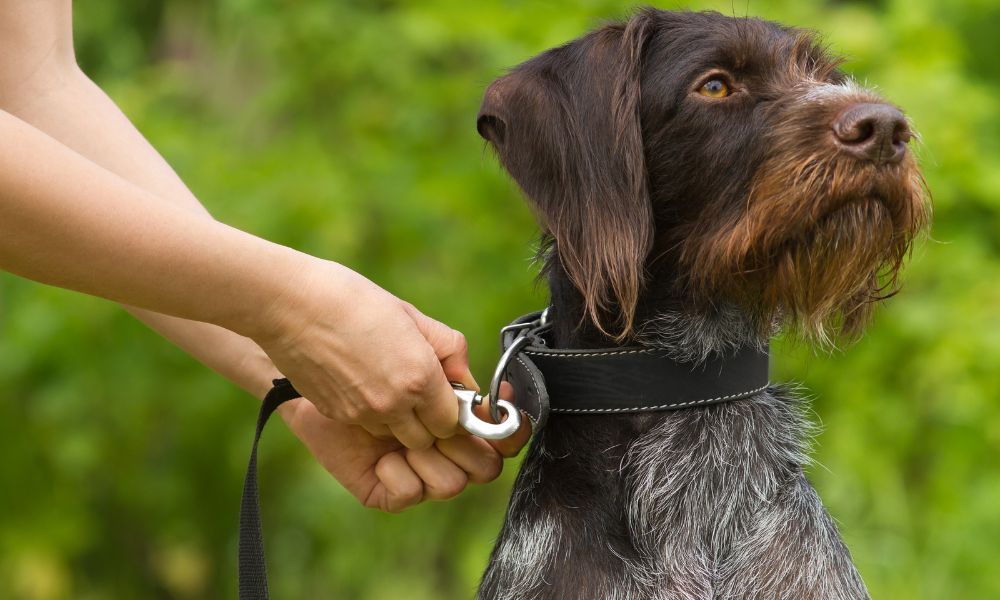The Ultimate Guide To Leash Training Your Dog
Posted by Jeff Porter on
Despite popular belief, dogs aren’t born knowing how to do all of the wonderful things they’re capable of doing, like potty or leash training. Although you may not think you’ll have issues getting your new puppy to walk on a leash correctly, they could cause more problems than you realize. Many dog owners don’t bother leash training their puppies because they can control them regardless; however, controlling your dog becomes much more difficult as they grow larger. With the ultimate guide to leash training your dog, you’ll have a headstart on the best training techniques.
Why Leash Train Your Pup?
Leash training is one of the most important parts of your dog’s overall training, as it keeps them in check during walks and other outings. If you’re looking for a reason to jump into training, follow along for a few crucial reasons to leash train as soon as possible.
Ensure Safety
Safety should always be your top priority, and walking them on a leash is one of the best ways to keep your dog safe. Many unleashed dogs run into the road and risk being hit by a car or run off to visit with other animals. Because other animals may carry diseases and other illnesses, keeping your pup on a leash is the best way to keep them at a safe distance from other dogs.
Avoid Pulling-Related Injuries
For many dogs, pulling is their first instinct on a leash. As their owner, you may have the desire to pull them back toward you. However, this practice usually causes them to pull away harder. As a result, your dog could injure their neck and throat area or pull you so hard that they hurt your wrist, elbow, or shoulder. Proper leash etiquette can protect you and your pup from pulling-related injuries.
Keep Them Close
In situations with large crowds, busy sidewalks or trails, or dog parks, you may want to keep your pup close to your side. This isn’t easy to do without a leash, but it’s also challenging with a leash if your dog isn’t leash trained properly. Whether you absolutely need to keep them close or simply want to avoid worrying, get your pup used to walking on their leash.
Prevent Eating Inappropriate Items
It’s no secret that dogs will eat just about anything, but this can be dangerous for their health. Whether it’s garbage, animal droppings, leaves, sticks, or some other inedible item, preventing your furry friend from eating inappropriate items is essential for their safety. With that said, keeping your pup on a leash is the best way to keep track of them and monitor their behavior.
Preparing With Leash Training Essentials
Leash training is necessary for all dogs, but you must also know the essential items you need to start the process. Consider this short list of training items:
- Collar or harness—your choice is okay for this one.
- Leash—a 4–6 foot leash is best, and non-retractable is preferred.
- Treats—go with your dog’s favorite to make it worthwhile for them.
- Patience—leash training may take some time, so you should bring your patience.
Training Your Dog To Walk on a Leash
Now that you know the reasons to start leash training and the essentials needed for the process, it’s time to learn the basic steps that work for most pups. Follow these crucial steps before troubleshooting any issues that may come up.
Introduce the Collar and Leash
Introduce the collar and leash before you start training. Let your dog wear them while you play together inside, and give them treats for good behavior. Your dog shouldn’t try to chew or bite at the leash; therefore, you shouldn’t reward that bad behavior. After playing and getting treats for a while, your pup will associate the collar and leash with treats and fun. Do this for a few short sessions to show them there’s nothing to worry about.
Draw Them to You With a Treat
Once you’re ready to start training, draw your pup to you with a treat. It’s better if you can get them to come to you without a treat, but you can also reward this behavior with a snack. Overall, you just need to have their full attention.
Attach the Leash and Practice Inside
Attach their leash and begin practicing inside. Because it’ll be enough of a challenge to feel and see the leash, you should take it a few steps at a time. Try walking a few steps ahead and wait for your dog to follow you. Offer a treat once they come to you, and repeat this process several times. After a few instances, your pup will begin following you automatically in anticipation of a treat.
Test Them Outdoors
Once your dog follows you on their leash indoors, it’s time to test their new skills outside. Be patient with them and keep the first several walks short. If your dog start getting away from you or pulling, you should stop, call them, and wait for them to come to your side. Once they do, reward your pup with a treat. Repeat this process several times until they follow your lead when walking on a leash.
Troubleshooting Your Training
Although training a dog is generally a straightforward process, it’s not unusual to experience a few issues along the way. After all, different breeds accept training in their own unique ways. Consider a few realistic troubleshooting practices for common problems you may experience during leash training.
- For Pulling: If your puppy begins to pull away from you in the opposite direction, stop walking and stand completely still. Avoid yanking them back toward you or dragging them along—this will cause your dog to pull even harder against you. When they return to your side, reward your pup with a treat and try again. Repeat if necessary.
- For Lunging: If your pup tends to lunge after cars, other animals, or people, you should redirect their attention using a treat and increase their distance from the target. Be aware of your surroundings to anticipate when they may lunge, and stop it before it starts.
- For Barking: If your dog barks at other dogs or people on walks, it may be a sign they aren’t getting enough exercise. Be sure to increase exercise times for more mental and physical stimulation. If this is still an issue with more exercise, use the same technique as you would for lunging.
With this ultimate guide to leash training your dog, you’ll have a leash trained pup in no time. And hopefully, it won’t be long before you can rely on a dog leash belt to keep your dog near you on walks. Although training isn’t always as simple as it seems, don’t give up too soon—some breeds just take longer to learn than others.




 Verified Purchase
Verified Purchase
 Catalog
Catalog
